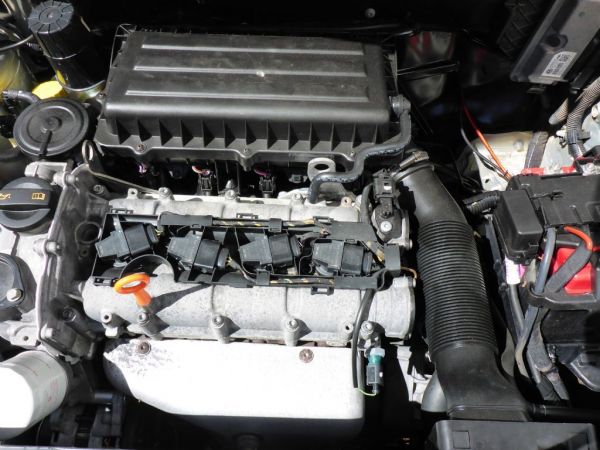Prevent operational issues with a well-tuned clp engine.
Prevent operational issues with a well-tuned clp engine.
Blog Article
Exactly How a Clp Engine Can Improve Performance in Numerous Industries
The introduction of CLP engines marks a significant shift in functional effectiveness across different markets, driven by their capacity to optimize gas consumption and lessen downtime. Industries such as manufacturing and logistics stand to gain substantially from their durable layout and regular power output, which guarantee to improve operations and improve productivity. As companies significantly focus on sustainability alongside efficiency, the role of CLP engines comes to be also more important. What stays to be seen is just how these developments will certainly form the future landscape of commercial operations and their influence on more comprehensive economic trends (clp engine).
Introduction of CLP Engines
CLP engines, or Continual Fluid Propellant engines, stand for a considerable development in propulsion modern technology, particularly for room applications. These engines make use of a continuous feed system that enables the sustained expulsion of propellant, resulting in boosted effectiveness and efficiency contrasted to standard strong or hybrid propulsion systems. By keeping a continuous flow of fluid propellant, CLP engines can attain more exact drive control, which is essential for maneuvering spacecraft in various mission situations.
The style of CLP engines integrates sophisticated materials and ingenious fuel monitoring systems. clp engine. This causes lowered weight and raised integrity, crucial aspects for long-duration area goals. The continual operation reduces the threat of combustion instability, an usual obstacle in conventional rocket engines.

Benefits in Manufacturing
The manufacturing of Continual Fluid Propellant (CLP) engines presents numerous notable advantages that enhance both efficiency and cost-effectiveness. Among the main advantages is the structured production procedure, which lowers the complexity related to standard propulsion systems. By making use of fluid propellant, suppliers can attain greater precision in engine efficiency, leading to optimized power result and reduced waste.
Furthermore, CLP engines facilitate a higher degree of modularity, enabling for less complicated integration into various manufacturing lines. This versatility can significantly reduce preparations and improve total functional versatility. Using CLP technology also has a tendency to minimize the requirement for substantial maintenance due to less relocating components, which equates into reduced downtime and operational prices.

Applications in Logistics
Leveraging Continual Fluid Propellant (CLP) engines in logistics offers significant advantages in operational performance and dependability. These engines supply a durable remedy for numerous transport demands, making it possible for the smooth movement of products across substantial ranges. The fundamental layout of CLP engines permits for regular power result, which converts right into smoother and extra foreseeable transport timetables.
One of the key applications of CLP engines in logistics is in heavy-duty freight transportation, where they can drive both ground and airborne automobiles. Their capability to preserve high performance under differing lots problems makes sure that shipment timelines are met, thereby boosting consumer fulfillment. Furthermore, CLP engines can i thought about this be integrated into automated logistics systems, helping with real-time tracking and maximizing path planning.
In addition, the durability of CLP engines lowers upkeep downtime, allowing logistics firms to optimize their operational capacities. This is especially advantageous in warehousing procedures, where effectiveness in handling and moving products is crucial. As logistics proceeds to progress, the integration of CLP engines stands for a forward-thinking method that not just enhances efficiency however additionally supports the sector's growing needs for dependability and rate.
Effect On Power Effectiveness
Just How do Continual Fluid Propellant (CLP) engines enhance power effectiveness in transport? CLP engines utilize a regular flow of liquid gas, optimizing combustion procedures and maintaining a steady drive output. This style decreases energy losses related to traditional burning engines, where gas delivery can vary and bring about inefficiencies.
The constant procedure of CLP engines allows for a much more reliable thermal cycle, resulting in higher certain impulse contrasted to conventional engines. clp engine. This equates to lowered fuel usage for the very same amount of work done, dramatically reducing functional prices across different transport sectors, including air travel and maritime sectors
Moreover, the capability of CLP engines to preserve optimum performance under differing load conditions minimizes the demand for constant acceleration and deceleration, even more improving gas efficiency. Enhanced energy effectiveness not just contributes to set you back savings yet likewise brings about lower greenhouse gas emissions, lining up with global sustainability goals.
Future Trends and Innovations
Arising developments in Constant Liquid Propellant (CLP) engine modern technology assurance to change the landscape of transport performance and sustainability. As sectors pivot towards greener choices, CLP engines stand at the leading edge, integrating ingenious products and layout methodologies that improve performance while minimizing ecological influence.
One of one of the most promising trends is the discover here fostering of hybrid systems that combine CLP engines with renewable power resources. This synergy can optimize fuel intake and minimize discharges, aligning with international Website sustainability objectives. Innovations in computational fluid characteristics (CFD) are assisting in the design of even more aerodynamically efficient engines, leading to lowered drag and enhanced gas effectiveness.
Furthermore, the advancement of smart tracking systems is readied to boost operational performances. These systems leverage information analytics and IoT technology to maximize engine performance in real-time, making sure that the engines operate within their most effective criteria.
As research study remains to check out different propellant formulations-- such as biofuels and artificial gas-- the future of CLP engines looks promising. By taking advantage of these innovations, markets can not just improve their effectiveness yet also add dramatically to a cleaner, a lot more lasting future in transportation.
Final Thought
In final thought, CLP engines stand for a considerable improvement in performance throughout multiple industries. The integration of advanced products and less relocating components decreases upkeep needs, while alignment with sustainability goals positions CLP engines as a critical innovation for the future.
Report this page